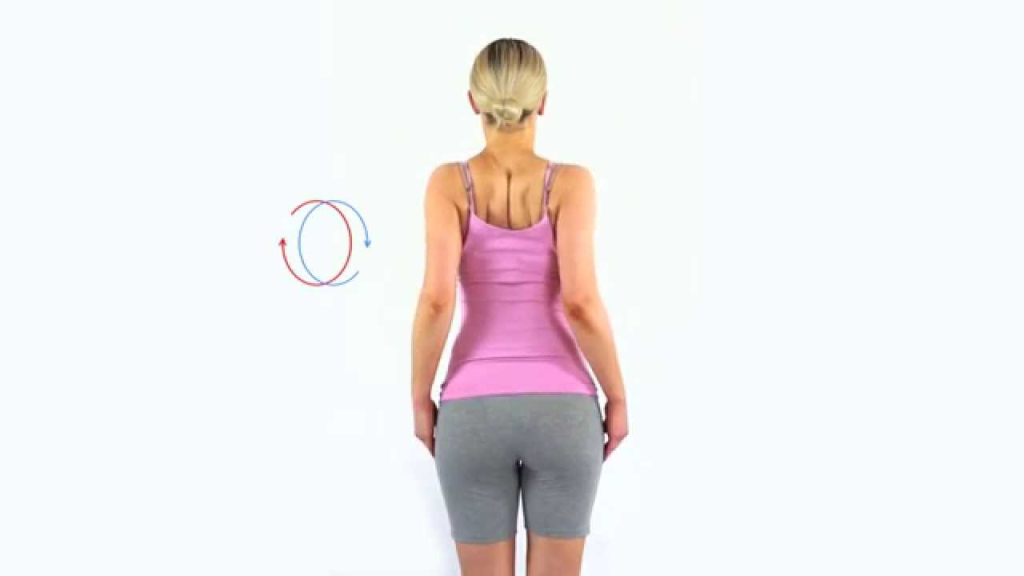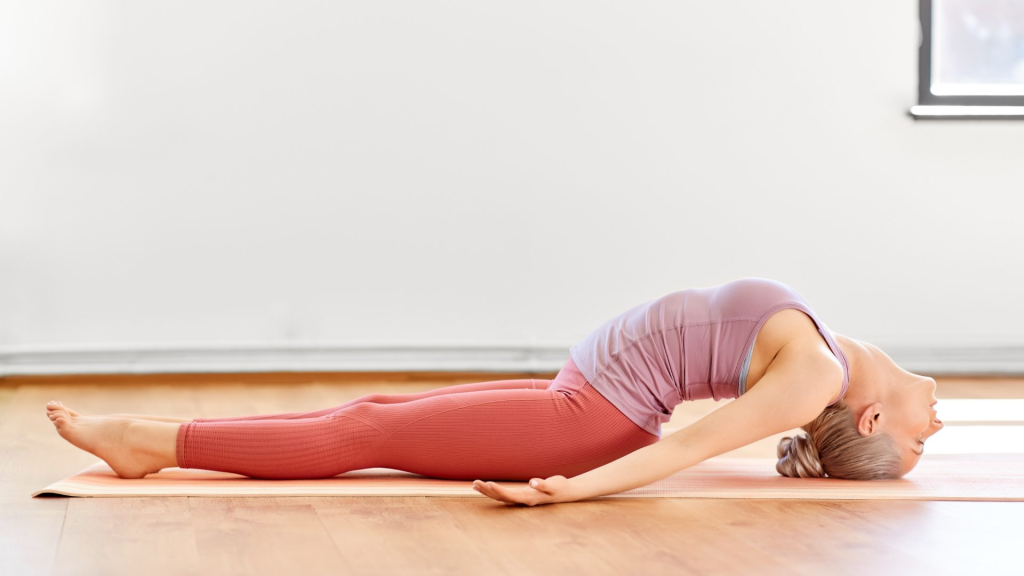Feeling constantly tired, gaining weight without reason, or struggling with mood swings? It might not just be stress or aging—it could be your thyroid. While medications and dietary changes are essential, there’s an often overlooked yet powerful tool to support your thyroid naturally: exercise.
Let’s explore how simple, low-impact exercises can work wonders for your thyroid health, especially if you’re a beginner just starting your wellness journey.

Table of Contents
What Can Happen After 30 Days of Thyroid-Friendly Exercise?
| Change | What You Might Notice |
|---|---|
| Improved Energy | Feeling less fatigued and more refreshed throughout the day |
| Better Mood | Reduced anxiety, improved emotional balance, and fewer mood swings |
| Enhanced Metabolism | Slight increase in energy expenditure; early signs of easier weight control |
| Reduced Joint Stiffness | More flexibility and less body stiffness, especially in the neck and shoulders |
| Improved Sleep | Falling asleep faster and waking up feeling more rested |
| Better Focus & Mental Clarity | Less brain fog, improved concentration and decision-making |
| Regulated Bowel Movements | Improved digestion due to boosted metabolism and activity |
| Greater Motivation | More consistency and drive to continue with healthy habits |
| Lower Stress Levels | Calmer response to stress; more emotional resilience |
| Boosted Confidence | Feeling more in control of your health and wellness journey |
Signs You Might Have a Thyroid Problem
Thyroid disorders can often go unnoticed because their symptoms mimic other health issues. However, certain signs can signal that your thyroid gland isn’t working properly—either producing too little (hypothyroidism) or too much hormone (hyperthyroidism).
Common Signs of Hypothyroidism (Underactive Thyroid):
| Symptom | Description |
|---|---|
| Fatigue | Feeling tired even after sleeping well |
| Weight Gain | Unexplained weight increase despite no change in diet |
| Cold Sensitivity | Feeling unusually cold, even in warm environments |
| Dry Skin | Flaky, rough skin that doesn’t improve easily |
| Constipation | Slower digestion and fewer bowel movements |
| Depression or Low Mood | Persistent sadness or mood swings |
| Slow Heart Rate | Reduced pulse rate, leading to sluggishness |
| Hair Thinning | Dry, brittle hair or hair loss, especially on the scalp |
| Puffy Face | Mild facial swelling or puffiness |
| Hoarseness | Subtle changes in voice due to thyroid swelling |
Common Signs of Hyperthyroidism (Overactive Thyroid):
| Symptom | Description |
|---|---|
| Unexplained Weight Loss | Losing weight without dieting or exercise |
| Rapid Heartbeat | Feeling your heart race or beat irregularly |
| Increased Appetite | Feeling constantly hungry, even after meals |
| Nervousness or Anxiety | Restlessness, jitteriness, or panic episodes |
| Tremors | Shaky hands or fingers |
| Sweating Excessively | Feeling hot or sweating even when inactive |
| Difficulty Sleeping | Trouble falling or staying asleep |
| Muscle Weakness | Especially in the upper arms and thighs |
| Frequent Bowel Movements | Diarrhea or frequent urges |
| Menstrual Changes | Lighter, irregular, or less frequent periods |
Important: If you notice several of these symptoms consistently, it’s wise to consult a healthcare professional for thyroid function tests (like TSH, T3, and T4).
Why Exercise Matters for Thyroid Health
The thyroid gland, a butterfly-shaped organ at the base of your neck, regulates metabolism, energy levels, and hormonal balance. When it’s underactive (hypothyroidism) or overactive (hyperthyroidism), it can throw your entire body off track.
Regular exercise helps by:
- Boosting metabolism
- Enhancing mood and reducing depression or anxiety
- Supporting healthy weight management
- Improving blood flow to endocrine glands
Did You Know? Even 20 minutes of light movement daily can enhance thyroid hormone sensitivity and energy levels significantly.
Start Small: Easy Thyroid-Friendly Exercises
These beginner-friendly exercises are gentle, effective, and tailored to support those with thyroid imbalances—especially hypothyroidism.
1. Walking

Walking is a low-stress cardio that stimulates your metabolism without overwhelming your system. Start with 15–20 minutes a day and gradually increase your pace or distance.
Tip: A brisk walk after meals can help manage weight gain associated with thyroid issues.
2. Neck Stretches and Shoulder Rolls


Gentle neck and shoulder exercises improve blood circulation around the thyroid gland and reduce stiffness.
How to Do It:
- Slowly tilt your head from side to side, forward and backward
- Do 10 shoulder rolls forward, then backward
Myth Buster: “You have to sweat a lot for exercise to help your thyroid.”
Truth: Even light movement like stretching can reduce fatigue and enhance hormone regulation.
3. Yoga for Thyroid

Certain yoga poses are known to stimulate thyroid function by massaging and compressing the gland.
Best Poses for Beginners:
- Bridge Pose (Setu Bandhasana)
- Shoulder Stand (Sarvangasana) (do under supervision if new)
- Fish Pose (Matsyasana)
- Cat-Cow Stretch
These poses support hormonal balance, calm the nervous system, and reduce stress—key triggers for thyroid dysfunction.
4. Breathing Exercises (Pranayama)

Breathing techniques like Nadi Shodhana and Bhramari help regulate the nervous system, enhance oxygen flow, and support thyroid healing.
Practice: 5–10 minutes daily in a quiet setting.
Interesting Fact: Stress is one of the biggest silent triggers of thyroid imbalance. Controlled breathing directly soothes your adrenal and thyroid glands.
5. Light Resistance Training

Using light dumbbells or resistance bands helps combat the muscle weakness often associated with hypothyroidism.
Start With:
- Wall push-ups
- Bodyweight squats
- Bicep curls with lightweight
Aim for 2–3 days per week with rest days in between.
How Often Should Beginners Exercise?
If you’re new to fitness or managing thyroid symptoms, consistency matters more than intensity.
| Exercise Type | Frequency |
|---|---|
| Walking | 4–5 times/week (20–30 mins) |
| Yoga/Stretching | Daily or every other day |
| Resistance Training | 2–3 times/week |
| Breathing Exercises | Daily (5–10 mins) |
Listen to Your Body: Signs to Watch
If you have hypothyroidism, fatigue can hit hard. It’s essential to be patient with yourself. Avoid overexertion and rest as needed.
Warning Signs You Need a Break:
- Dizziness or palpitations
- Excessive fatigue after light activity
- Muscle cramps or joint pain
Bonus: Lifestyle Tips to Support Exercise & Thyroid Function
- Stay Hydrated: Dehydration slows metabolism and affects thyroid hormone activity.
- Prioritize Sleep: Aim for 7–9 hours to restore hormonal balance.
- Balanced Diet: Pair your workouts with thyroid-friendly foods like selenium-rich Brazil nuts, iodine-rich seaweed, and zinc-packed pumpkin seeds.
Conclusion: Small Steps, Big Benefits
Exercising with a thyroid condition doesn’t mean pushing your body to the limit. It’s about gentle consistency, mindful movement, and honoring what your body needs. Whether it’s a walk in the park, a few yoga stretches, or mindful breathing, each step brings you closer to better health.
Remember: You don’t have to do it all at once. Start small, stay consistent, and trust the process—your thyroid will thank you.
Frequently Asked Questions (FAQs)
Can exercise cure thyroid problems?
Exercise can’t cure thyroid disorders, but it can significantly help manage symptoms by boosting metabolism, improving mood, and supporting hormonal balance. It complements medical treatment but doesn’t replace it.
What is the best time to exercise for thyroid patients?
Morning workouts are generally ideal as they boost energy levels for the day. However, the best time is the one that fits your schedule and doesn’t cause fatigue—consistency is more important than timing.
Is yoga really effective for thyroid issues?
Yes, certain yoga poses can stimulate thyroid function by improving circulation to the gland and reducing stress, which is a known trigger for thyroid imbalances. Yoga also enhances flexibility and mental well-being.
Should I avoid intense workouts if I have hypothyroidism?
Yes, especially in the beginning. High-intensity workouts can lead to fatigue or even worsen symptoms. Start with low-impact exercises like walking, yoga, and light strength training, then gradually progress if your energy allows.
How long does it take to see benefits from exercising with thyroid issues?
You may notice improved energy, sleep, and mood within a few weeks. Weight management and hormonal balance might take longer—usually a few months with consistent effort and medical support.
Are breathing exercises really helpful for thyroid health?
Absolutely. Breathing exercises like Nadi Shodhana and Bhramari help reduce cortisol (stress hormone) levels, support adrenal-thyroid harmony, and promote relaxation—essential for thyroid recovery.
What are signs I should stop or adjust my workout?
If you feel dizzy, unusually fatigued, experience chest pain, or have joint discomfort, pause your routine and consult your healthcare provider. Your body’s signals matter—especially with a thyroid condition.





